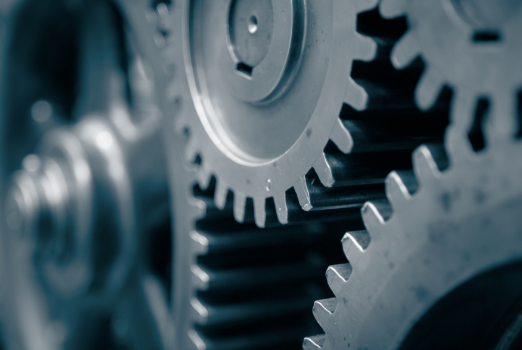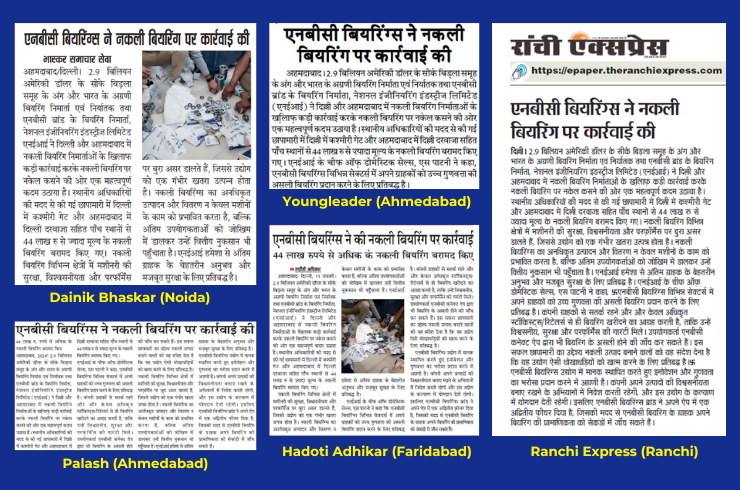A retaining ring, also known as a circlip or snap ring, stands as a fundamental yet often overlooked component in the realm of fasteners. Its primary function is to secure various elements axially on a shaft or within a bore. Unlike traditional fastening methods such as threads or bolts, retaining rings provide a cost-effective and efficient solution for axial component retention.
Why would you use a Retaining Ring?
Retaining rings find application in engineering and manufacturing processes due to their unique ability to streamline the fastening process while ensuring structural integrity. Unlike traditional fastening devices that often involve intricate threading or complex mechanisms, retaining rings provide a simpler yet highly effective solution. The key advantage are:
- Simple and straightforward design that helps quick installation & removal.
- Eliminating the need for additional elaborate fastening procedures.
- Instead of relying on bolts, nuts, or screws, retaining rings secure components in place using a circular, ring-like structure.
- The assembly process is also expedited reducing the likelihood of errors or complications associated with more intricate fastening methods.
- The absence of threaded components reduces the risk of cross-threading, a common concern with traditional fastening mechanisms.
Overall, the decision to use retaining rings is driven by the desire for a practical and reliable fastening solution. Whether in manufacturing, repair, or assembly processes, the simplicity and effectiveness of retaining rings make them a valuable component, simplifying the complex task of securing elements in a wide range of applications.
How is a Retaining Ring Made?
The manufacturing process of retaining rings varies based on factors like type and size. Stamping, coiling, and machining are common methods employed in their production. These methods ensure precision and durability, aligning with the stringent requirements of diverse applications.
Where are Retaining Rings Used?
Retaining rings find extensive applications across various industries. Their usage spans from automotive and industrial settings to machinery applications. Common scenarios include securing bearings, gears, pulleys, or other rotating components on shafts.
Types of Retaining Rings & Usage
- Internal Retaining Rings: These rings fit within a bore or housing, exerting radial force to secure components effectively.
- External Retaining Rings: Designed to fit around a shaft, these rings exert outward force, ensuring a secure grip on components.
- Constant Section Rings: Maintaining a uniform cross-section throughout, these rings offer stability and ease of installation.
- Spiral Rings: Crafted from flat wire, these rings provide 360-degree contact with the groove, ensuring enhanced stability.
- E-Clips: Resembling the letter “E,” these clips are commonly used in shaft grooves to secure components firmly.
What Materials are Used for a Retaining Ring?
The material selection for retaining rings depends on the specific demands of the application. Carbon steel, stainless steel, or various alloys are commonly utilized to ensure the rings withstand the mechanical stresses and environmental conditions they might encounter.
Retaining rings, though seemingly unassuming, play a crucial role in maintaining the structural integrity of diverse mechanical assemblies. Their versatility, coupled with reliability, positions them as indispensable components across a myriad of industries. This comprehensive exploration aims to shed light on the intricacies of retaining rings, offering valuable insights into their types, materials, and applications, empowering engineers and enthusiasts alike in optimizing their usage for diverse engineering scenarios.
FAQs:
Q: What is another name for a retaining ring?
Retaining rings go by various names, and two commonly used alternatives are “circlips” and “snap rings.”
Q: What are retaining ring pliers used for?
Retaining ring pliers serve as specialized tools meticulously crafted for the efficient installation or removal of retaining rings. These pliers have distinct tips and features designed to securely grip and manipulate the retaining ring during the installation or removal process.
Q: What is the difference between circlip and retaining ring?
In engineering terminology, “circlip” and “retaining ring” are often used interchangeably, essentially denoting the same type of fastener. Both terminologies refer to a versatile, ring-shaped device used for securing components onto a shaft or within a bore.
Q: How are retaining rings measured?
The measurement of retaining rings involves determining their nominal size, which corresponds to the shaft or bore diameter they are intended to fit. This measurement is critical for ensuring a precise and secure fit during the installation process.
Q: What tool is used to install retaining rings?
The installation of retaining rings requires specialized tools, with retaining ring pliers being a commonly employed instrument. These pliers are tailored to provide a secure grip on the ring, facilitating seamless installation or removal. Additionally, other tools designed for specific retaining ring types may be utilized, ensuring the process aligns with industry standards and safety practices.











